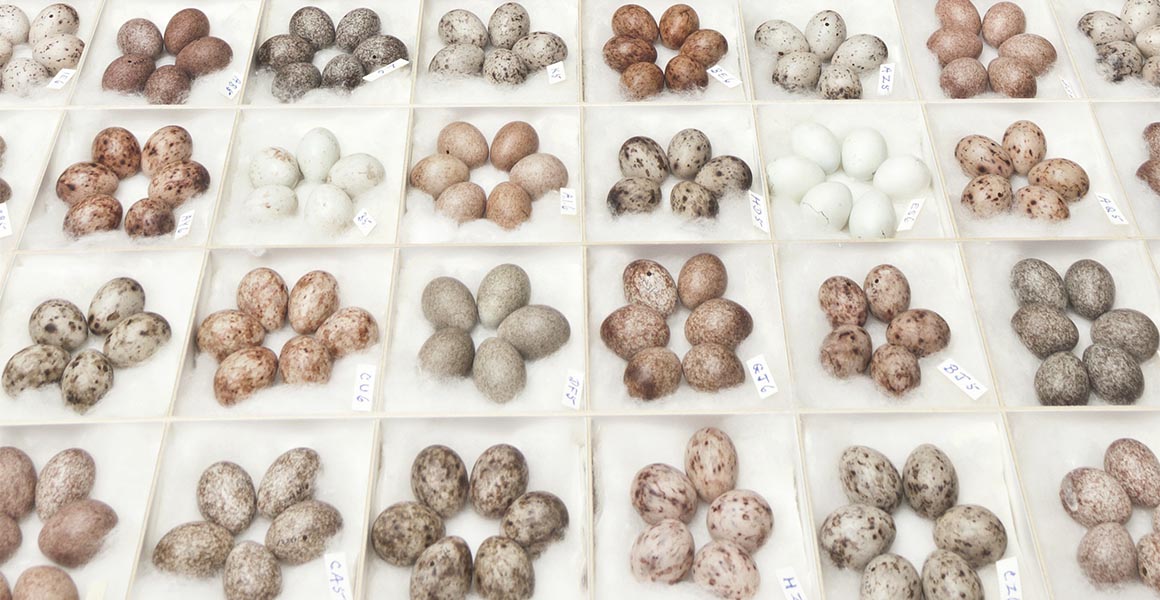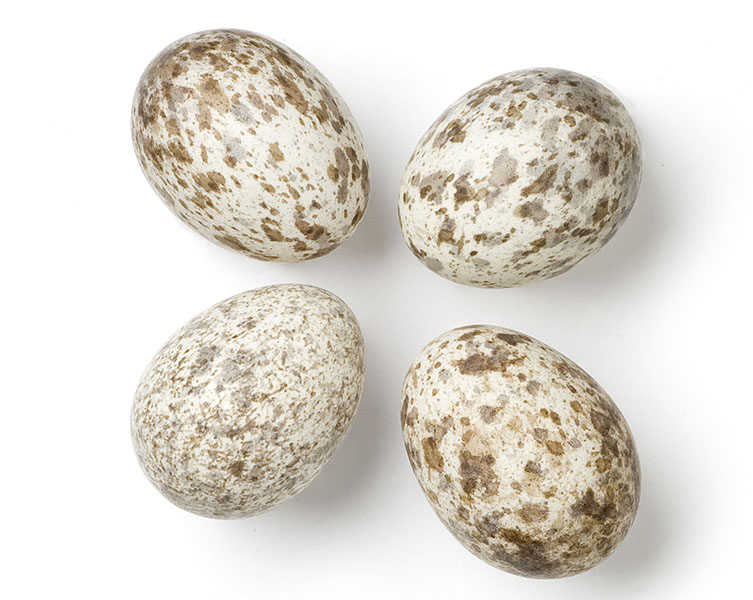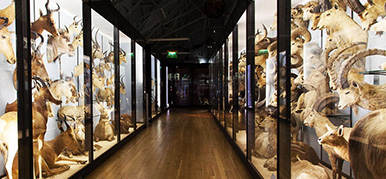The Natural History Museum at Tring holds the largest collection of bird eggs in the world.
It's been used by researchers for hundreds of years to learn about how and where birds live and breed.

A tray of tree pipit (Anthus trivialis) eggs with data on where and when they were collected, from the Tomkinson Collection
The Natural History Museum at Tring holds the largest collection of bird eggs in the world.
It's been used by researchers for hundreds of years to learn about how and where birds live and breed.
Oology is the branch of ornithology concerned with the study of birds' eggs.
The preservation of eggshell for study and display has been part of natural history collecting for at least 350 years.
It was particularly common during the 1800s, when naturalists collected eggs from all over the world. The collection of wild birds' eggs is now only permitted with a licence and the historical specimens already collected are vital for understanding the lives of birds.
Today the eggs at Tring and the documents that accompany them are used regularly by scientists, historians, artists and researchers from all over the world. They can provide insight into past and present bird populations, breeding ecology and the evolution of species.
The collection can also be used to shed new light on historical expeditions and explorations, and the study of human culture and history.

Sind sparrow egg specimens from the collection
The Bird Group, in the Department of Life Sciences, is based at Tring. It is home to the world's largest and most comprehensive collection of 'blown' birds' eggs (meaning their contents have been removed), including more than a million individual eggs and 4,000 nests.
It is made up of thousands of individual collections which have gradually been brought together over 260 years.
In 1954 the Protection of Birds Act made egg collecting illegal in Britain, but before this, egg collecting had been a common hobby and thousands of specimens were in public and private collections. The Museum at Tring houses many of them.
The eggs are from all over the world, having been brought back to Britain by collectors and explorers of the eighteenth, nineteenth and twentieth centuries. Under licence, researchers still add to the collection today.
Collectors delicately prepared their specimens by using a blow-pipe to remove the yolk and albumen, and recorded the details of where and when they collected the eggs. The accuracy of this extra information is vital for modern scientists.

A tray of peregrine falcon (Falco peregrinus) eggs from the Tomkinson Collection
Douglas Russell, Tring's Senior Curator of Birds' Eggs and Nests, says, 'This information is crucial as it now allows us to study each clutch in the context of the population from which it was taken.
'The Museum holds hundreds of thousands of index cards and original catalogues, notebooks and diaries containing the data.
'These manuscripts record the egg identifications, as well as the dates and locations that specimens were collected, and details of the collectors.'
The oldest eggs at Tring were collected in the 1700s, but the vast majority date from the mid-1800s to the early 1900s. The collection is particularly strong in areas of former British colonial interest.
Douglas adds, 'In total we hold several hundred thousand data-rich clutches of eggs, making this one of the largest research collections available worldwide.
We have specimens for about 52% of known bird species, including many extinct and endangered birds - some of which are among the only known examples for study. These include eggs of the great auk (Pinguinus impennis) and the only known nest and egg of the Laysan rail (Zapornia palmeri).

Emperor penguin eggs brought back from the 1911 Terra Nova expedition to the Antarctic. The holes were made to allow investigation of the embryos.
This emperor penguin (Aptenodytes forsteri) egg was collected on the British Terra Nova Antarctic Expedition (1910-1913).
During Captain Scott's first Antarctic expedition between 1901 and 1904, the breeding grounds of the emperor penguin were discovered for the first time. Zoologist Dr Edward Wilson examined three emperor penguin chicks. He was keen to study the embryos of this species, to test a theory that birds evolved from reptiles.
Wilson and his fellow explorers returned to collect the eggs in 1911 on the Terra Nova. He and two brave colleagues, Apsley Cherry-Garrard and Henry Bowers, left the main camp in search of them, braving treacherous conditions. It took them 19 days to find the penguin colony and collect five eggs. Two broke on the way back.
Wilson was later selected to join Captain Scott on his final push to the South Pole. The men never returned. Apsley Cherry-Garrard delivered the embryos and eggshells to the Museum on his behalf in the summer of 1913.

Sir David Attenborough holds two guillemot eggs (left) and a newly hatched jungle fowl chick (right)
The Museum collection has featured in documentaries and contributed to important discoveries relating to the evolution, characterisation and development of different egg morphologies - including egg shape, size, colouration, pattern and shell structure.
Douglas says, 'Digitisation to increase access to collections and the development of new imaging and analysis techniques have opened up new avenues of research.
'The importance of historical egg collections to science and society has never been greater.'
Sir David Attenborough recently visited Tring to film Attenborough's Wonder of Eggs as part of BBC Two's Natural World, a classic wildlife series that tells in-depth stories of incredible animals.
In the hour-long show, the broadcaster revealed the secrets of birds' eggs from creation to hatching, exploring how they are made, the reasons behind their shape and their intrinsic purpose.
It was shown on BBC Two in March 2018.
The Museum at Tring looks after one of the largest ornithological collections in the world, composed of 1,150,000 skins, skeletons, nests, sets of eggs and specimens preserved in spirit, as well as the ornithological library with 75,000 works.
If you are a researcher and wish to visit the collection, please contact the Bird Group. The collection is not open to the public.

Discover the world-class collection of animals and birds at the Natural History Museum at Tring, Hertfordshire.

Find out more about the bird egg and nest collections at Tring.
Don't miss a thing
Receive email updates about our news, science, exhibitions, events, products, services and fundraising activities. We may occasionally include third-party content from our corporate partners and other museums. We will not share your personal details with these third parties. You must be over the age of 13. Privacy notice.
Follow us on social media